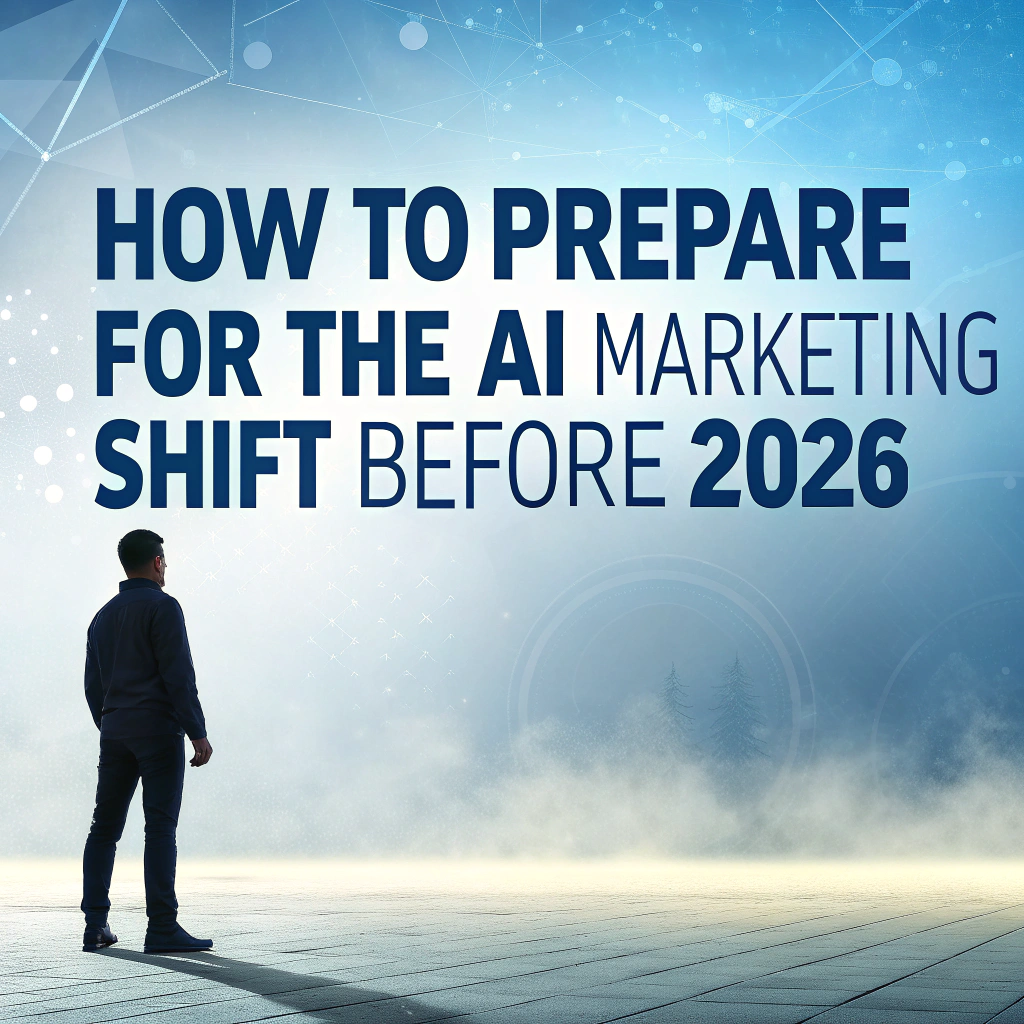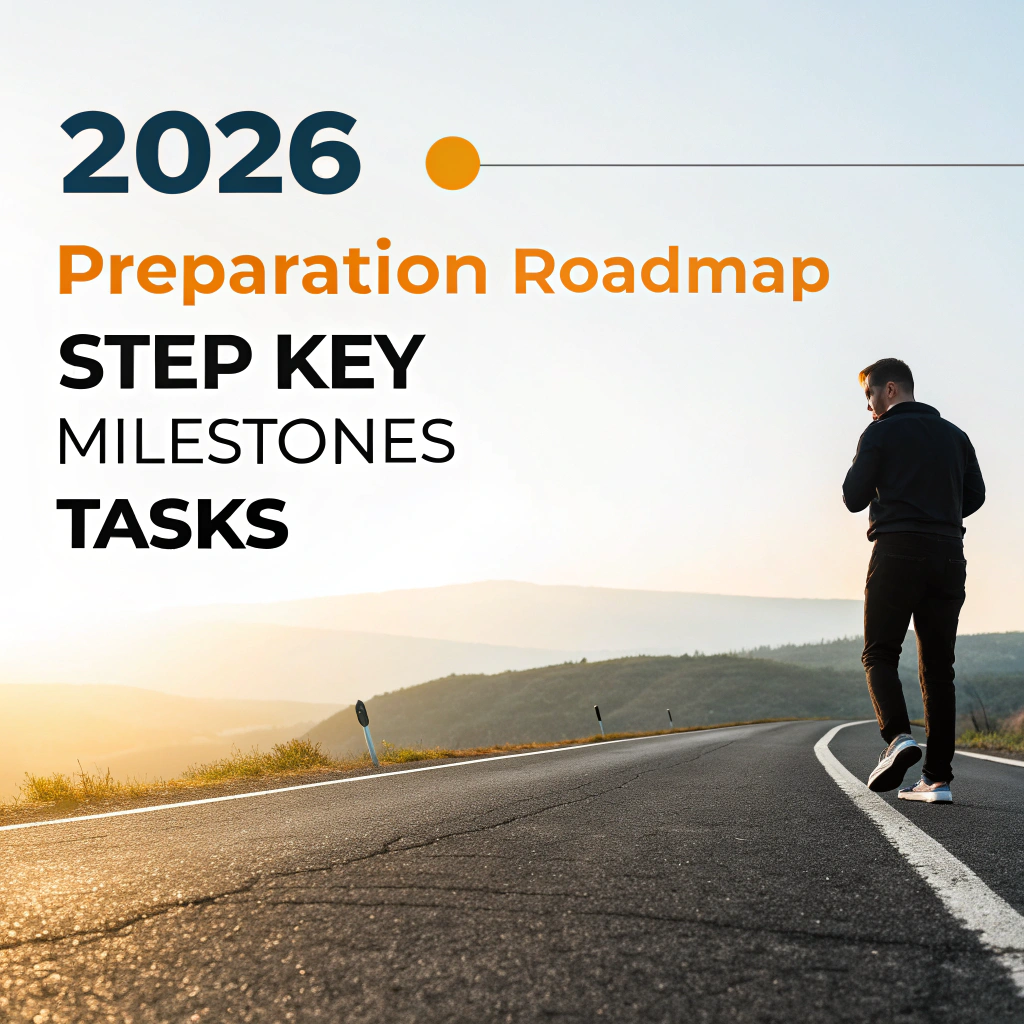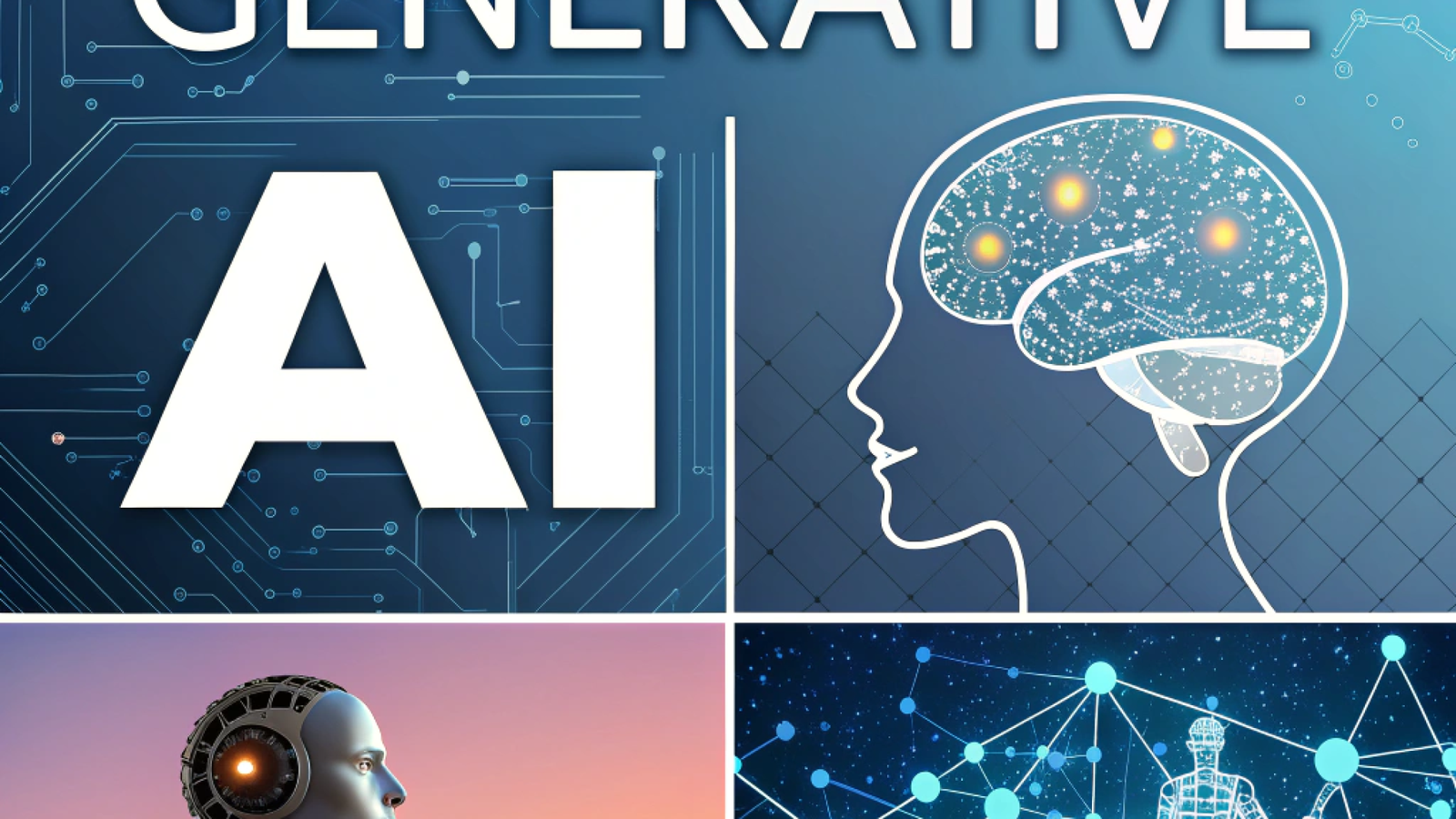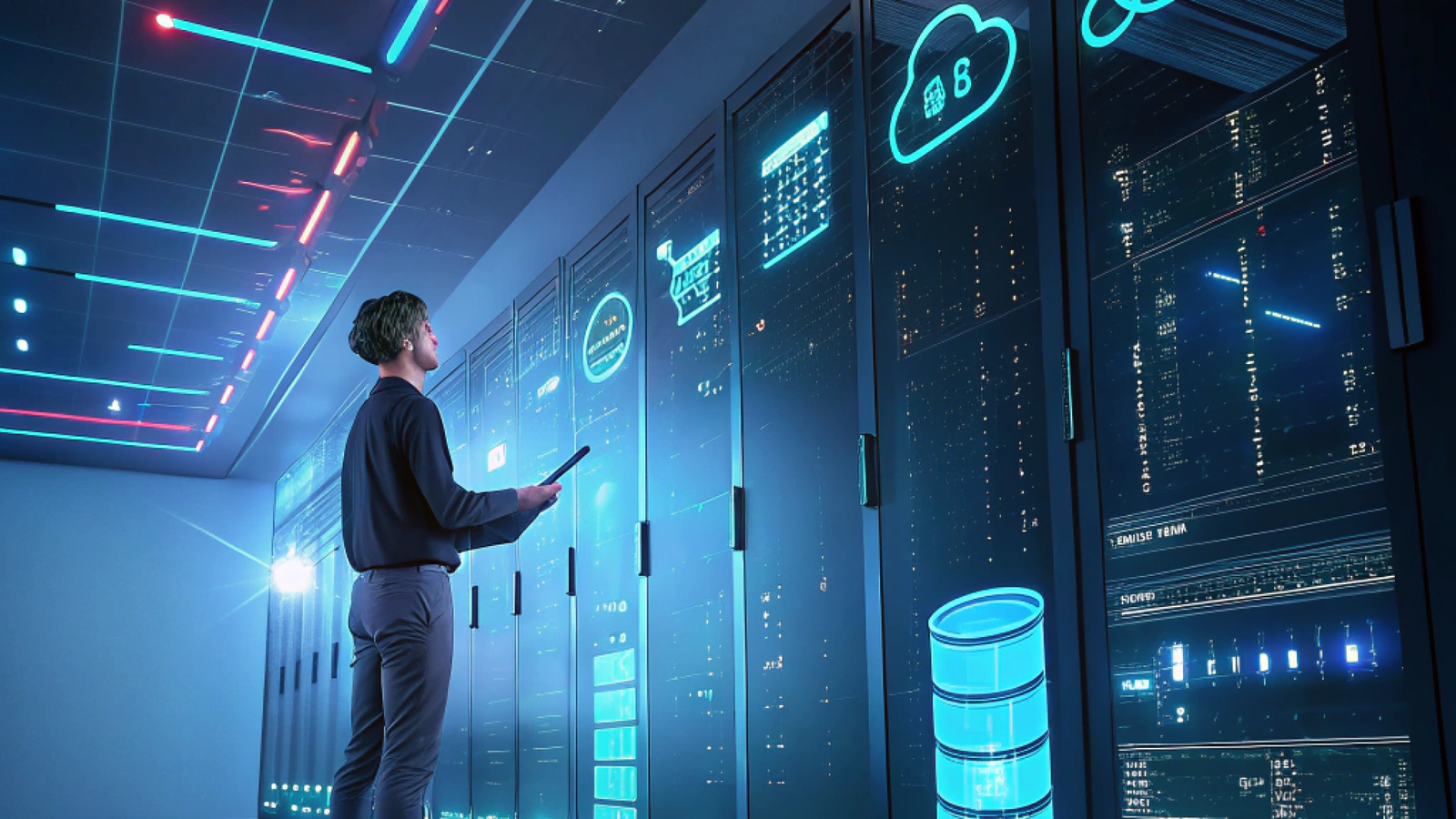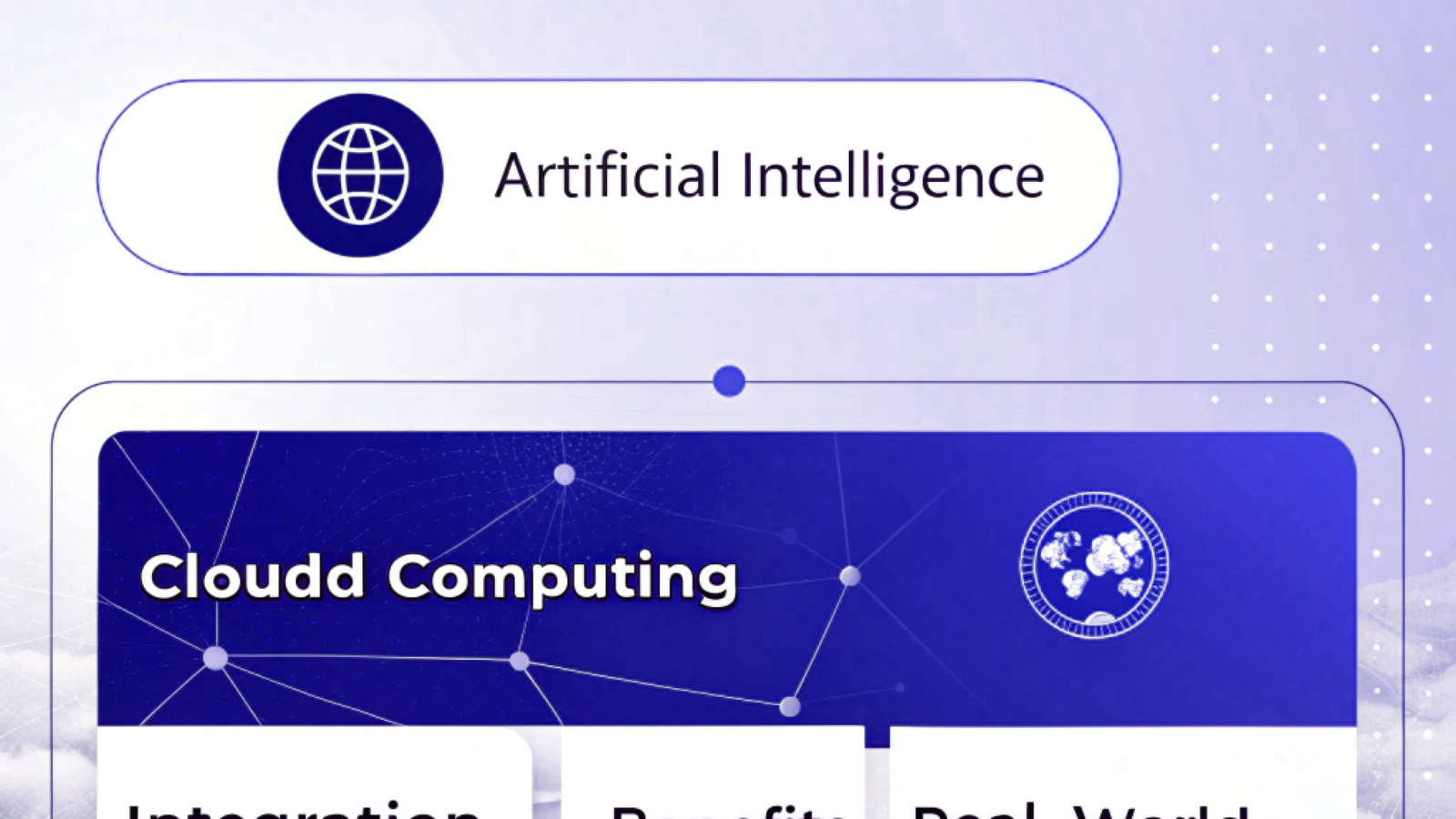Currently Empty: ₹0.00
Unbelievable Predicted AI Trends for Digital Marketing by 2026 You Must Prepare For
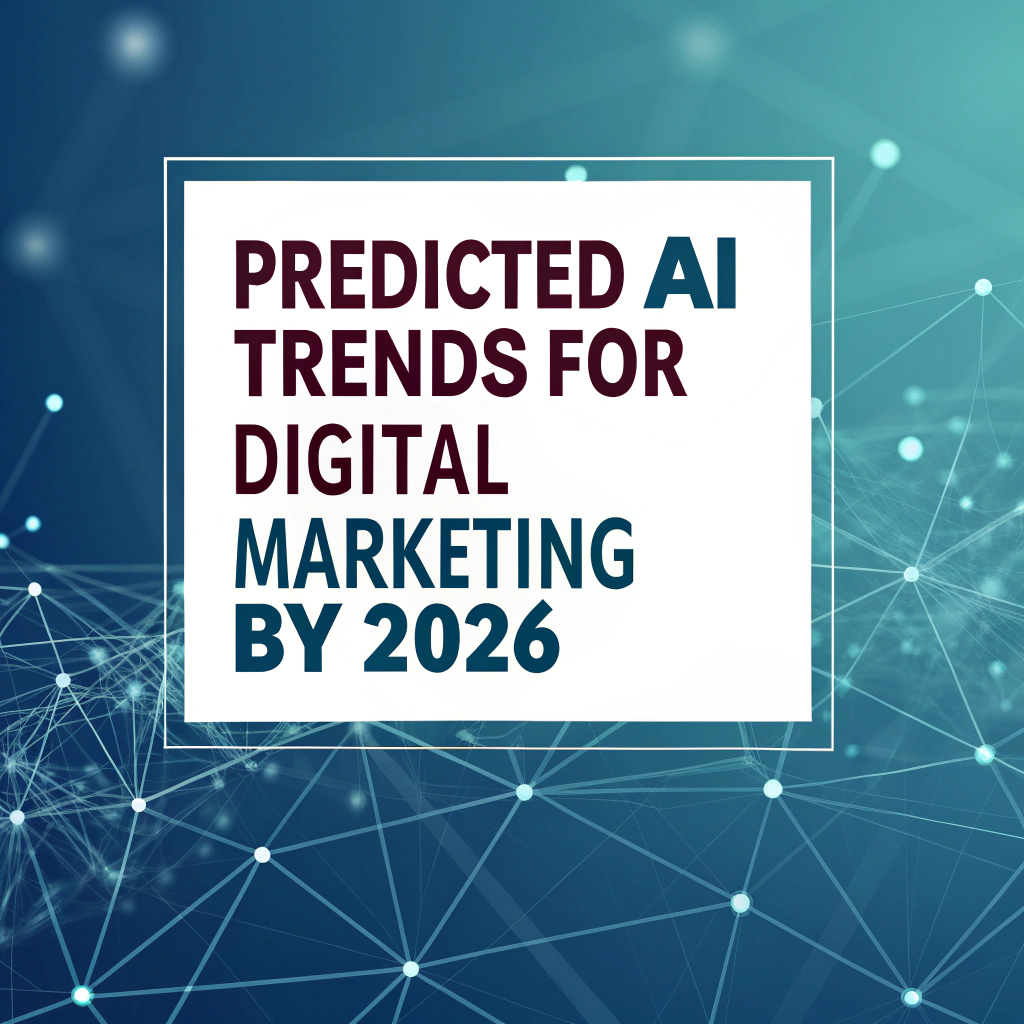
Introduction & Current AI Impact
Predicted AI Trends for Digital Marketing by 2026 – Why This Matters Now
Artificial Intelligence (AI) is no longer a futuristic buzzword in marketing — it’s here, and it’s changing everything. From automated ad campaigns that optimize themselves in real time to chatbots that answer customer questions instantly, AI is now deeply woven into the fabric of digital marketing. But here’s the thing: we’re still at the early stages.
By 2026, the predicted AI trends for digital marketing will be far more advanced, and businesses that adapt early will dominate the online space. In fact, a report by MarketsandMarkets estimates that the AI in marketing industry will grow from $27.4 billion in 2023 to over $107 billion by 2028 — meaning the next few years will see explosive innovation.
A Quick Look Back: How AI Entered Marketing
Before we dive into the 2026 trends, it’s important to understand how AI became such a game-changer:
2011–2015 – Early AI in SEO (Google’s RankBrain algorithm) began analyzing search intent.
2016–2019 – Chatbots like Facebook Messenger bots started becoming mainstream.
2020–2023 – AI content generation (like ChatGPT, Jasper) and predictive analytics tools gained mass adoption.
2024–2025 – AI tools now dominate ad targeting, personalization, and content creation.
This history shows us a clear pattern — AI adoption is accelerating, and each new wave of technology becomes more powerful and accessible.
 Where We Are in 2025: The Current AI Marketing Landscape
Where We Are in 2025: The Current AI Marketing Landscape
In 2025, AI is already capable of:
Content Generation: Blog posts, ad copy, product descriptions.
Ad Targeting: Showing ads to the right people at the right time.
Customer Interaction: Chatbots, voice assistants, and automated email replies.
Data Analysis: Processing millions of data points in seconds to find patterns.
However, what we have now will look basic compared to what’s coming by 2026.
Why Marketers Should Care About 2026 Predictions
The reason marketers, entrepreneurs, and students should care about the predicted AI trends for digital marketing by 2026 is simple:
Early adopters win – Those who prepare now will have a massive competitive advantage.
Consumer expectations are changing – AI will raise the bar for personalization and speed.
Marketing skills are evolving – Learning AI tools is becoming as important as knowing SEO or social media.
The Big Shift: From Reactive to Predictive Marketing
In the past, marketing was reactive — you’d launch a campaign, wait for results, and adjust later. By 2026, AI will make marketing predictive. Imagine:
Knowing when a customer is about to buy something.
Understanding which product they’ll prefer before they tell you.
Sending them an offer at the exact right moment.
That’s the power of predictive AI, and it’s going to redefine how we approach campaigns.
SEO Impact: AI Will Change Google Ranking Strategies
One often-overlooked part of the AI + marketing evolution is how it will affect SEO. Google’s search algorithms are becoming more AI-driven than ever before, focusing on:
Search intent over keywords
Voice search optimization
Visual search and image recognition
If you’re creating content now, you need to future-proof it for these AI shifts.
Setting the Stage for the 2026 Trends
In the next section of this blog, we’ll dive into Predicted AI Trends for Digital Marketing by 2026 in detail, covering:
Hyper-personalized marketing
AI-powered predictive analytics
Voice & visual search optimization
AI influencer discovery
Fully automated ad campaigns
AI-generated interactive experiences
The goal is to give you actionable insights so that by the time 2026 arrives, you’re not catching up — you’re leading.
If you’re ready to not just survive but thrive in the AI-powered future of marketing, keep reading — because what’s coming next could change the way you think about marketing forever.
Predicted AI Trends for Digital Marketing by 2026
Artificial Intelligence is no longer just a marketing tool — by 2026, it will be the core engine driving customer acquisition, retention, and engagement. Here’s a deep dive into the major AI-powered trends you can expect, backed by data, real-world examples, and preparation tips.
1. Hyper-Personalized Marketing at Scale
By 2026, personalization won’t just mean adding a customer’s name to an email — it will mean customizing entire customer experiences in real time. AI will track:
What customers browse online
Their recent purchases
Their mood based on online interactions
The devices they use and where they are
Example: Imagine a customer searching for running shoes. Within minutes, AI could send them a short Instagram style ad showing shoes in their size, favorite color, and within their budget — and even offer a time-limited discount.
Stat to Note: According to McKinsey, 71% of consumers already expect personalization, and by 2026, this expectation will be near 100%.
Preparation Tip:
Start using AI-driven CRM systems like Salesforce Einstein or HubSpot AI now.
Collect high-quality first-party data before privacy laws tighten.
2. Predictive Analytics for Anticipating Customer Actions
By 2026, marketers will no longer wait to see if a campaign worked — AI will predict outcomes before campaigns even start. This is powered by predictive analytics, where AI studies customer behavior patterns to forecast:
When they’re most likely to buy
Which products they’ll want next
What price point will convince them to convert
Example: An AI system predicting a customer will book a hotel within 5 days — triggering a perfectly timed discount ad.
Stat to Note: Gartner predicts that by 2026, 60% of digital marketing campaigns will rely on AI-based predictive analytics.
Preparation Tip:
Learn tools like Google Analytics 5 with AI Insights, Pecan AI, or IBM Watson Marketing.
Shift your campaigns from “reactive” to “predictive” planning.
3. Voice & Visual Search Domination
With voice assistants like Alexa, Siri, and Google Assistant improving daily, and visual search via tools like Google Lens becoming mainstream, the way people search online is changing.
Voice search is conversational (“Find me the best digital camera under $500”).
Visual search lets users upload an image to find products instantly.
Example: A user takes a picture of a sofa they like — AI instantly finds similar options from multiple retailers and shows them with prices.
Stat to Note: ComScore projects that by 2026, 50% of all searches will be voice or image-based.
Preparation Tip:
Optimize content for conversational keywords (“How do I…” “Best way to…”).
Use high-quality product images with descriptive alt text for visual SEO.
4. AI-Powered Influencer Marketing
Finding influencers is currently a manual process — but by 2026, AI will handle everything. It will:
Scan millions of social media accounts
Identify niche influencers with the highest engagement in your target market
Predict ROI before collaboration
Example: AI detects a micro-influencer with 25,000 followers whose content aligns perfectly with your product. Before they go viral, you sign an exclusive deal at a fraction of the price.
Stat to Note: Influencer marketing spend is expected to reach $24 billion by 2026, with AI playing a key role in partner selection.
Preparation Tip:
Start experimenting with AI influencer platforms like Upfluence AI, Modash, or Influencity.
Build long-term influencer relationships before demand skyrockets.
5. Fully Automated Ad Campaigns
In the current landscape, marketers set up and monitor campaigns manually. By 2026, you’ll simply tell an AI your goals and budget, and it will:
Design ad creatives
Target the right audience
Adjust bids automatically
Run A/B tests
Optimize continuously
Example: You launch a $1,000/month campaign on Facebook and Google. AI runs it across platforms, shifts spending to what’s working, and doubles ROI without human intervention.
Stat to Note: A Deloitte survey found that 77% of marketers believe full ad automation will be standard by 2026.
Preparation Tip:
Learn how to use AI ad managers like Google Performance Max and Meta Advantage+.
Focus on creative storytelling — the part AI still struggles with.
6. AI-Generated Interactive Content
By 2026, static images and text ads will feel outdated. AI will make it possible to create interactive, gamified, and immersive experiences in minutes:
Quizzes that adapt based on user answers
Augmented reality (AR) product try-ons
3D demos generated instantly
Example: A furniture store’s AI lets customers place virtual sofas in their living room through AR, adjusting color and style in real time.
Stat to Note: Research by Statista shows AR ad spending will exceed $7 billion annually by 2026.
Preparation Tip:
Experiment with AR/VR platforms like Ready Player Me, Zappar, or Canva’s AI 3D features.
Use interactive lead magnets to boost engagement.
7. Ethical & Responsible AI Marketing
As AI grows, so will concerns about data privacy, deepfakes, and misinformation. By 2026, regulations will be tighter, and brands will need to prove ethical AI use.
Example: AI-generated product reviews could face legal action unless clearly disclosed.
Preparation Tip:
Keep AI use transparent in your marketing.
Follow GDPR, CCPA, and future AI regulations closely.
Key Takeaway for 2026 Trends
The predicted AI trends for digital marketing by 2026 point toward a future where automation, personalization, and immersive experiences become the norm. The winners will be those who adopt early, learn AI tools, and stay human-focused in strategy.
Next, we’ll break down how to prepare for these AI shifts before 2026, including the skills, tools, and strategies you need to future-proof your marketing career or business.
How to Prepare for the AI Marketing Shift Before 2026
The predicted AI trends for digital marketing by 2026 are exciting, but they also pose a challenge: if marketers and businesses don’t prepare, they risk being left behind. This section is your actionable roadmap to get ready for the AI-driven future.
 1. Master AI Tools for Marketing
1. Master AI Tools for Marketing
AI tools are evolving rapidly. By 2026, proficiency in AI will be as essential as knowing social media platforms or SEO today.
Key AI tools to learn now:
Content Creation: ChatGPT, Jasper, Writesonic
Design & Visuals: MidJourney, DALL·E 3, Canva AI
Video & Animation: Synthesia, Pictory, Runway AI
Analytics & Insights: Google Analytics 5 (AI-powered), IBM Watson Marketing
Ad Automation: Google Performance Max, Meta Advantage+
Preparation Tip:
Start experimenting with at least 2–3 AI tools today.
Document workflows so you can scale AI usage in campaigns.
2. Strengthen Data Analytics Skills
By 2026, AI will process massive amounts of customer data, but humans still need to interpret insights and make strategic decisions.
Essential analytics skills:
Reading predictive AI reports
Identifying trends and anomalies
Integrating multiple data sources (CRM, social, website analytics)
Preparation Tip:
Take online courses in AI analytics and data visualization.
Practice creating actionable insights from AI-generated data.
3. Focus on Creativity & Strategic Thinking
AI can generate content, ads, and visuals — but it cannot replace human creativity and intuition.
How to prepare:
Learn storytelling techniques for marketing campaigns
Develop brand voice and tone guides
Strategize campaigns where AI handles execution but humans handle vision
Preparation Tip:
Run small-scale AI campaigns and experiment with different creative directions.
Evaluate which AI-generated content resonates best with your audience.
4. Build an AI-Ready Team
By 2026, digital marketing teams will need a mix of technical and creative talent.
Key roles to develop:
AI Marketing Specialists (tool operators & data analysts)
Creative Strategists (storytelling & campaign design)
Ethical AI Advisors (compliance, privacy, transparency)
Preparation Tip:
Cross-train existing staff in AI tools
Encourage continuous learning with online AI certifications
5. Collect & Manage Quality Data
AI thrives on high-quality, first-party data. By 2026, privacy laws may limit third-party data usage, so businesses must focus on ethical data collection.
Preparation Tip:
Implement strong customer data platforms (CDPs)
Collect explicit consent for email, app, and website interactions
Organize data for AI integration (structured, clean, labeled)
6. Stay Updated with AI Regulations
AI in marketing is powerful but carries ethical and legal responsibilities.
Future regulations may restrict deepfake ads, manipulative targeting, and personal data usage.
Brands that violate these rules risk fines and loss of consumer trust.
Preparation Tip:
Follow updates on GDPR, CCPA, and emerging AI legislation
Adopt transparent AI practices in all campaigns
7. Experiment with AI Early
The best preparation is hands-on experience. Launch pilot campaigns now to understand AI’s strengths and limitations.
Ideas for experimentation:
Automate one small ad campaign per month using AI
Use AI to generate weekly blog or social media content
Test AI chatbots for customer support and lead generation
Preparation Tip:
Track results carefully to measure ROI
Adjust strategies before scaling AI-driven campaigns
8. Build an Adaptive Mindset
AI will evolve faster than any marketer can predict. Success depends on adaptability:
Be open to changing tools, strategies, and workflows
Monitor AI trends continuously (blogs, webinars, AI newsletters)
Collaborate with AI-savvy teams
Preparation Tip:
Schedule quarterly reviews to update campaigns based on AI innovations
Encourage experimentation and learning from failures
Key Takeaways for Preparation
Learn AI tools now — don’t wait until 2026.
Develop analytical and creative skills — AI executes, humans decide.
Prepare your team — combine tech and creative expertise.
Collect quality data ethically — privacy matters more than ever.
Experiment early — small-scale campaigns help you learn quickly.
Stay adaptable — AI evolves constantly; your strategy must too.
By taking these steps, marketers and businesses will be fully equipped to leverage the predicted AI trends for digital marketing by 2026 — turning potential challenges into opportunities.
Opportunities & Challenges in AI-Driven Marketing
The predicted AI trends for digital marketing by 2026 open a world of possibilities, but they also come with unique challenges. Understanding both sides is crucial for marketers, businesses, and students who want to thrive in the AI-powered marketing era.
1. Opportunities in AI Marketing
AI is more than a tool — it’s a growth engine. Here are the major opportunities businesses can leverage:
a) Improved Customer Targeting & Personalization
AI allows hyper-personalized marketing at scale. By 2026:
Brands can target individual preferences, past behaviors, and real-time data.
Customers receive tailored offers, increasing conversion rates.
Example: Spotify already uses AI for personalized playlists. By 2026, AI could predict exactly which type of content or product a customer wants before they search for it.
b) Enhanced ROI & Efficiency
AI automates repetitive tasks like ad management, content scheduling, and lead scoring. This frees marketers to focus on:
Strategy
Creative campaigns
Innovation
Example: An AI ad campaign could automatically optimize budgets, creatives, and targeting 24/7, ensuring maximum ROI without manual intervention.
Stat: Studies show AI automation can increase campaign efficiency by up to 30–40%.
c) Smarter Insights & Predictions
AI’s predictive analytics give marketers foresight. By 2026, AI can forecast:
Which campaigns will succeed
Customer churn probability
Optimal marketing channels
Example: Amazon predicts buying patterns to suggest new products — a model that will expand to nearly every industry.
d) AI-Powered Creativity
AI tools can now generate content, videos, and graphics. By 2026, marketers will have:
AI-assisted ad visuals
Interactive content generation
AI-driven video campaigns
Example: Nike could use AI to create multiple ad variations automatically, each tailored for a different demographic.
e) Cost Reduction & Scalability
AI reduces human workload, allowing businesses to scale campaigns globally without significantly increasing costs.
Small businesses can compete with large brands using AI-driven strategies.
Campaigns can adapt in real time to changing customer behavior.
2. Challenges in AI Marketing
While the opportunities are immense, there are important challenges to consider:
a) Over-Reliance on Automation
AI is powerful, but blindly relying on it can backfire:
Generic messaging may harm brand perception
Lack of human oversight can miss cultural nuances
Solution: Keep humans in the loop for strategy and final approvals.
b) AI Bias & Ethical Concerns
AI algorithms learn from historical data. If that data is biased, it can create:
Unintended discrimination
Skewed ad targeting
Brand reputation issues
Solution: Regularly audit AI outputs and ensure diverse training data.
c) Privacy & Compliance Risks
With AI analyzing customer data, privacy concerns rise:
Regulations like GDPR, CCPA, and future AI laws will govern usage
Non-compliance can lead to fines and loss of trust
Solution: Implement transparent data policies and secure data storage practices.
d) Cost of Implementation
High-quality AI tools can be expensive:
Enterprise AI platforms require investment
Small businesses may face barriers in access
Solution: Start with affordable AI tools, scale gradually, and measure ROI.
e) Rapid Technological Change
AI evolves quickly; strategies that work today may become obsolete tomorrow.
Solution: Maintain an adaptive mindset and continuously upskill your team.
3. Real-World Examples of AI in Marketing
Coca-Cola: Uses AI for content creation and social media analytics to track campaign engagement.
Sephora: AI-powered chatbots provide personalized beauty advice and product recommendations.
Netflix: AI predicts what shows users will watch next, driving retention and engagement.
These examples show how AI can both enhance customer experience and boost revenue — but only when implemented strategically.
4. Balancing Opportunities & Challenges
The key to thriving in 2026: balance innovation with responsibility.
Use AI to maximize efficiency and personalization
Maintain human oversight for ethics, creativity, and compliance
Experiment, measure results, and adapt strategies continually
By acknowledging both sides, marketers can harness AI for growth while avoiding pitfalls.
Key Takeaways for 2026 Marketing
AI offers massive efficiency, personalization, and ROI improvements.
Ethical, responsible AI use is mandatory to build trust.
Over-reliance on automation can harm brands; human strategy remains crucial.
Early adoption and continuous learning will separate leaders from laggards.
The Future Roadmap + Conclusion
The predicted AI trends for digital marketing by 2026 are not just theoretical—they’re actionable opportunities that marketers and businesses must prepare for today. In this final section, we’ll provide a step-by-step roadmap to thrive in the AI-driven marketing landscape and conclude with key takeaways.
 1. Step-by-Step Preparation Roadmap for 2026
1. Step-by-Step Preparation Roadmap for 2026
Step 1: Audit Your Current Marketing Strategy
Review all campaigns, tools, and processes
Identify areas where AI can improve efficiency and personalization
Map customer journeys for AI integration
Step 2: Upskill Your Team
Train marketers on AI tools for content, analytics, and ads
Develop creative and strategic thinking skills
Encourage experimentation with small-scale AI campaigns
Step 3: Implement AI Tools Gradually
Start with AI-powered analytics and content creation tools
Integrate AI into ad automation and personalization campaigns
Track results and optimize continuously
Step 4: Build a Data-Driven Foundation
Collect clean, structured, and first-party customer data
Ensure compliance with privacy regulations
Use AI to analyze data and generate actionable insights
Step 5: Experiment & Innovate
Test AI-driven personalization, chatbots, and interactive content
Explore voice search and visual search optimization
Incorporate AI-generated creative campaigns
Step 6: Monitor Performance & Adapt
Use AI to track campaign performance in real time
Adjust strategies based on AI insights and emerging trends
Keep an eye on new AI tools and market shifts
2. Long-Term Predictions Beyond 2026
Looking ahead, AI will continue transforming digital marketing in ways that are even more advanced:
Hyper-Intelligent AI Campaigns: Marketing strategies fully run by AI, continuously evolving in real time.
Emotionally Adaptive Marketing: AI analyzing emotional responses to personalize ads and content dynamically.
Fully Immersive Experiences: AR and VR marketing becoming mainstream with AI creating interactive campaigns instantly.
Global AI Collaboration: AI connecting brands, influencers, and audiences worldwide in seamless, automated networks.
Marketers who start preparing now will lead this transformation, gaining a significant competitive advantage.
3. Actionable Tips to Stay Ahead
Adopt AI Early: Begin integrating AI tools into campaigns now.
Focus on Skills Humans Excel At: Creativity, strategy, and ethical judgment remain essential.
Prioritize Data Quality: AI depends on accurate, structured, and ethical data collection.
Experiment Frequently: Run small campaigns, test ideas, and scale what works.
Stay Adaptive: AI evolves rapidly; continuous learning is non-negotiable.
Final Thoughts
The predicted AI trends for digital marketing by 2026 represent a monumental shift in how businesses communicate, engage, and convert customers. AI will automate, personalize, and optimize every aspect of marketing — but humans remain at the center. The brands and marketers who combine AI efficiency with human creativity will dominate the digital space.
By following the roadmap outlined in this blog, you can ensure that your marketing strategy is not just reactive, but future-ready, innovative, and competitive.
Remember: AI is not here to replace marketers — it’s here to supercharge them.
If you want to learn AI and Digital Marketing, join our Diploma in Digital Marketing Bootcamp. The course includes 2 months of training, 2 months of practical internship, and 2 months of paid internship where you will receive a stipend. We provide online and offline classes, and after completing the bootcamp, you will receive a Globally recognized certificate.
Enroll Now: www.cambridgeinfotech.io or contact 91+099024 61116
RELATED BLOG’S
Digital Marketing Jobs for Freshers: Exciting Career Paths in 2025
Top Courses in India for Students – Best Career Paths In 2025
The Most Powerful Artificial Intelligence Topics In ( 2025 )
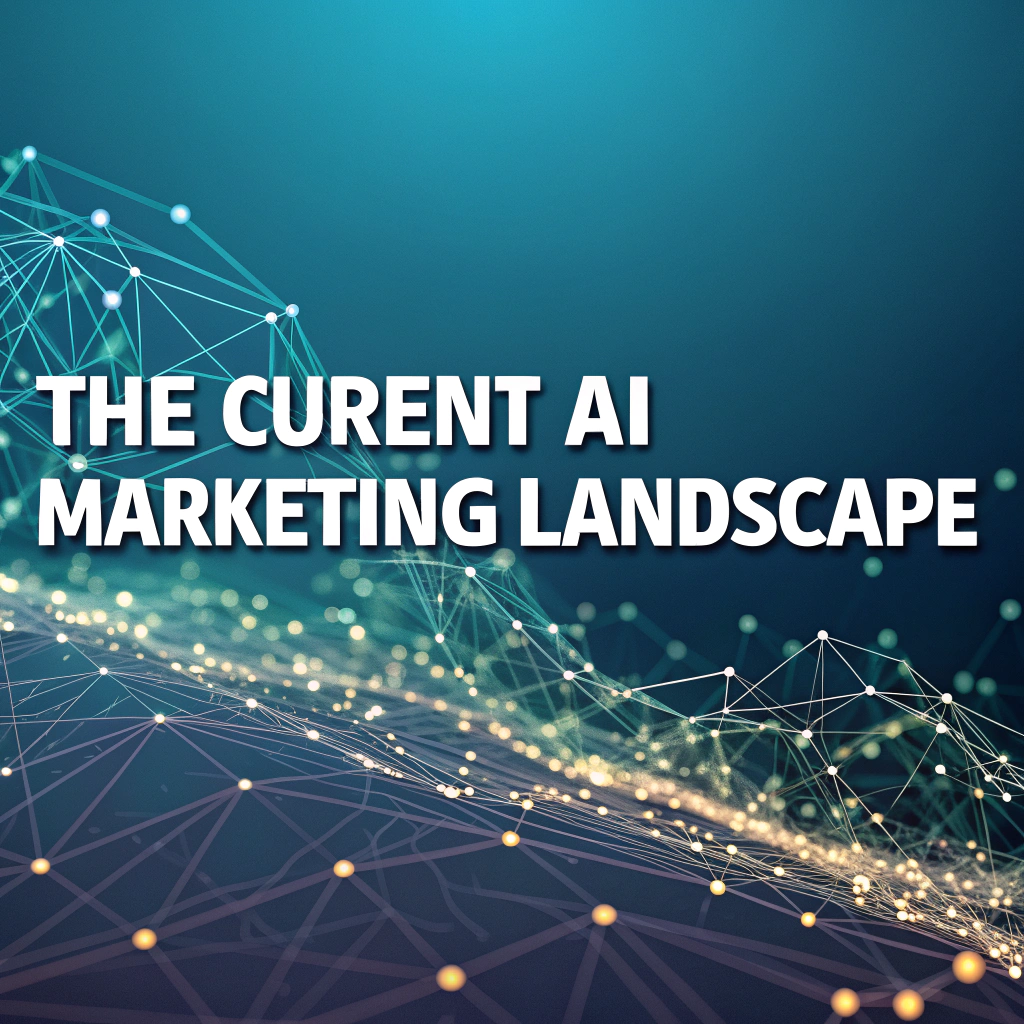 Where We Are in 2025: The Current AI Marketing Landscape
Where We Are in 2025: The Current AI Marketing Landscape